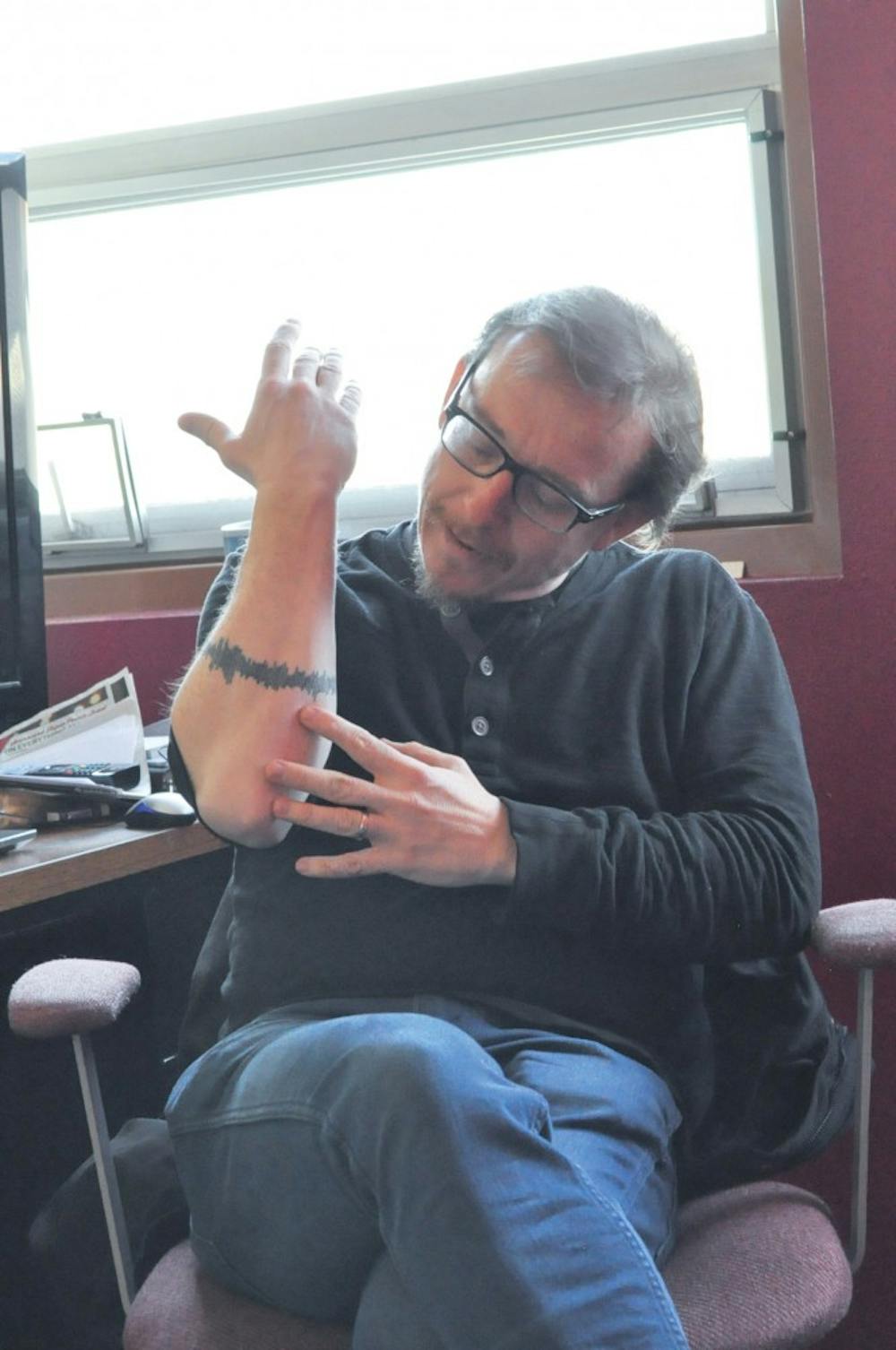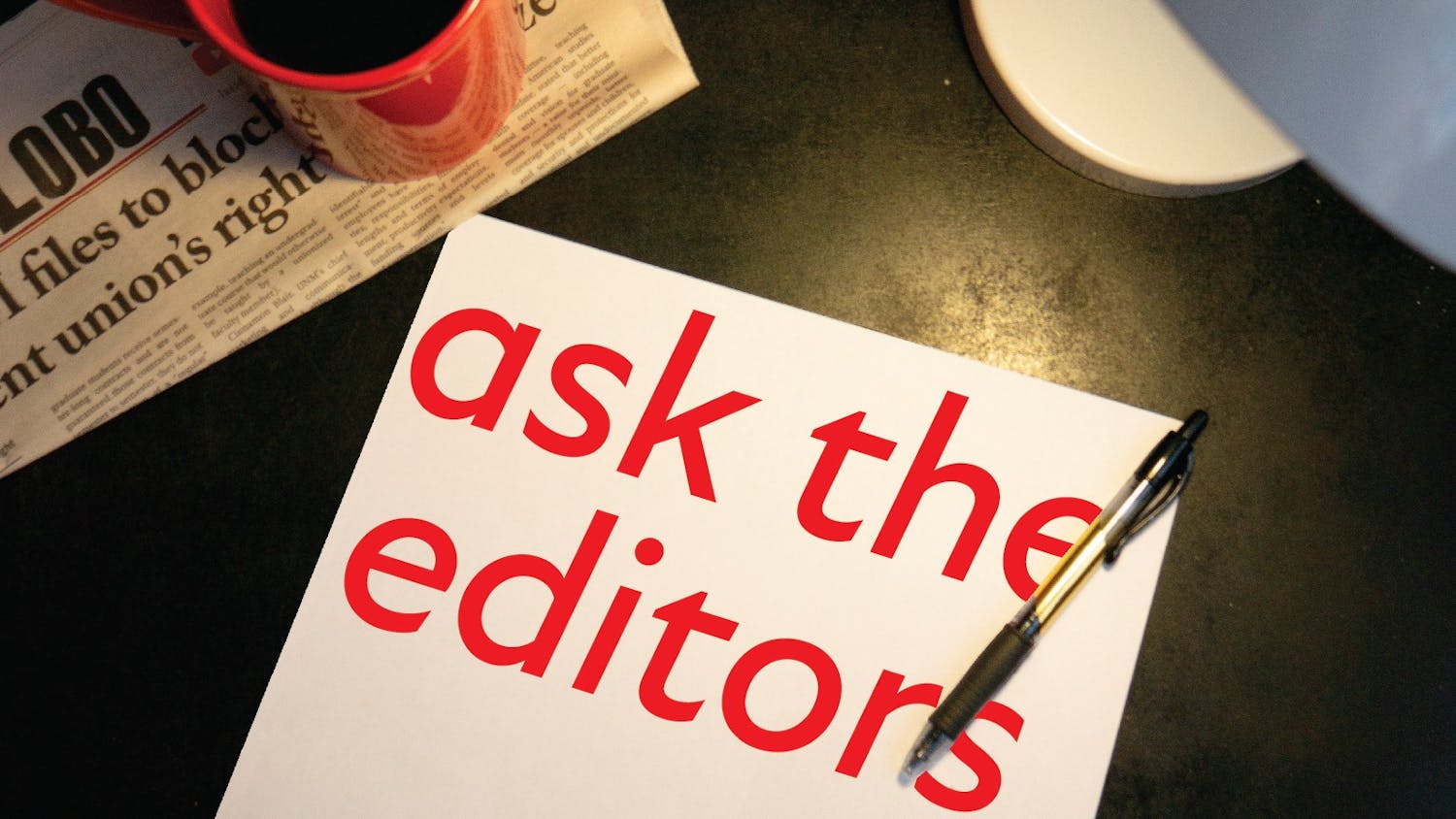This image is on the ankle of Michael Ryan, an associate professor of history, who is one of many people who sport visible tattoos in the workplace.
Ryan said he has been getting inked since he was 18 years old. Each of his tattoos, even Wile E. Coyote and the Road Runner, have a deep and symbolic connection to him that he enjoys displaying, he said.
“I like the sense of inscribing your body permanently with something that resonates with you... I’m not a big fan of people getting tattoos just to do it,” Ryan said. “I also find the universality of it fascinating. You see tattooing practiced in cultures almost all around the globe.”
Ryan said his experience as an educator with visible ink has been a pleasant one. Many of his colleagues have complimented his body art and shown a profusion of interest in tattooing, he said. He could not recall a time when he felt prejudged because of his tattoos.
According to a survey from Harris Interactive on the statistics portal Statista, 21 percent of 2,016 American adults admitted to having one or more tattoo in 2012, a five percent increase from an unknown sample in 2003.
In 2013, salary.com conducted a survey asking Americans if they have a tattoo and sorted the results based on the respondents’ occupations. The respondents with the highest percentage were those who worked in agriculture and ranching at 22 percent. The lowest percentage was at eight percent from respondents who had government jobs.
The survey revealed that those who hire employees who will represent the company or institution are significantly less accepting of tattoos than hiring managers in fields that don’t require customer contact or representation.
There are some, like Megan Abrahamson, an English instructor, who say that despite social reality, visible tattoos are becoming more prominent in the workplace. Abrahamson said though it’s not talked about, tattoos are becoming so commonplace now that many, including her, don’t even notice them anymore.
“There was a time when it was seen as improper or unprofessional for women to wear pants instead of skirts, but those times have certainly changed,” Abrahamson said. “I think tattoos are a similar sort of situation. They may bother some people, but not for much longer, I think.”
R. Lee Montgomery, assistant professor of art, said that while he enjoys the personal function of tattoos, he has also embraced his tattoos as learning tools in the classroom.
Montgomery said his first tattoo is one he uses frequently in the classroom. It is an armband of a visual sound extraction from a radio play by Antonin Artaud called “To Be Done with the Judgment of God” taken from a part when Artaud makes a piercingly high-pitched squeak, he said.
Get content from The Daily Lobo delivered to your inbox
“When I talk to my students in electronic art about working with a sound program, I make the point that the visual that they see is not the sound. It is an abstraction of the sound,” Montgomery said. “In some ways, I consider this an art piece. It is a sound that you can’t hear, and even when I tell the story, you hear me making that sound... I feel like it is a way for me to help continue the legacy of that radio program without having to be direct.”
Montgomery also uses a diagram he drew of a transistor tattooed on his wrist in his classes.
Montgomery said that while the tattoos are useful for instruction in his classes, he actually got them as personal souvenirs of specific time periods.
A former student of Ryan’s, Emilee Howland-Davis, said she always liked Ryan’s ink. She views tattoos as a form of academic freedom, she said.
“I see both tattoos and piercings as a way for a person to express themselves, just like their clothes or hair style,” Howland-Davis said.
Skylar Griego is a culture reporter for the Daily Lobo. She can be reached at culture@dailylobo.com or on Twitter @DailyLobo.






